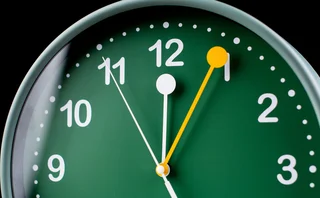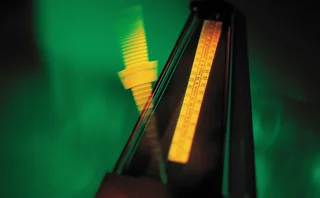
EU firms run the most euro swap risk – Eurex exec
LCH data shows trades with at least one EU counterparty make up a quarter of volumes, but German CCP claims EU firms run more risk

Only 25% of euro interest rate swap transactions involve European Union firms on at least one side of the trade, according to data from LCH. For the past four years, that statistic has been the backbone of the argument that forcing EU firms to shift euro clearing out of London would confine them to a smaller liquidity pool.
But while the numbers quoted by LCH may be accurate, Matthias Graulich
Only users who have a paid subscription or are part of a corporate subscription are able to print or copy content.
To access these options, along with all other subscription benefits, please contact info@risk.net or view our subscription options here: http://subscriptions.risk.net/subscribe
You are currently unable to print this content. Please contact info@risk.net to find out more.
You are currently unable to copy this content. Please contact info@risk.net to find out more.
Copyright Infopro Digital Limited. All rights reserved.
As outlined in our terms and conditions, https://www.infopro-digital.com/terms-and-conditions/subscriptions/ (point 2.4), printing is limited to a single copy.
If you would like to purchase additional rights please email info@risk.net
Copyright Infopro Digital Limited. All rights reserved.
You may share this content using our article tools. As outlined in our terms and conditions, https://www.infopro-digital.com/terms-and-conditions/subscriptions/ (clause 2.4), an Authorised User may only make one copy of the materials for their own personal use. You must also comply with the restrictions in clause 2.5.
If you would like to purchase additional rights please email info@risk.net
More on Markets
Trump’s LatAm gambit spurs FX hedging rush
Venezuela op boosts risk reversals as investors look to protect carry trades
One Trading brings 24/7 equity trading to Europe
Start-up exchange will launch perpetual futures Clob in Q1 after AFM nod
FXGO volumes surge despite fee switch-on
Dealers split on whether levy is behind volume increases across SDPs
Banks hope new axe platform will cut bond trading costs
Dealer-backed TP Icap venture aims to disrupt dominant trio of Bloomberg, MarketAxess and Tradeweb
Kyriba sees uptake in AI-assisted FX hedging tools
Automated data collection and cleaning helps corporates create better hedges and has cut unexplained P&L moves by 87%, says vendor
Review of 2025: It’s the end of the world, and it feels fine
Markets proved resilient as Trump redefined US policies – but questions are piling up about 2026 and beyond
Does crypto really need T+0 for everything?
Instant settlement brings its own risks but doesn’t need to be the default, writes BridgePort’s Soriano
Asset managers prep autocall ETFs with assets tipped to hit $30bn
Actively managed strategies wait in the wings after systematic approach nets Calamos $500m








